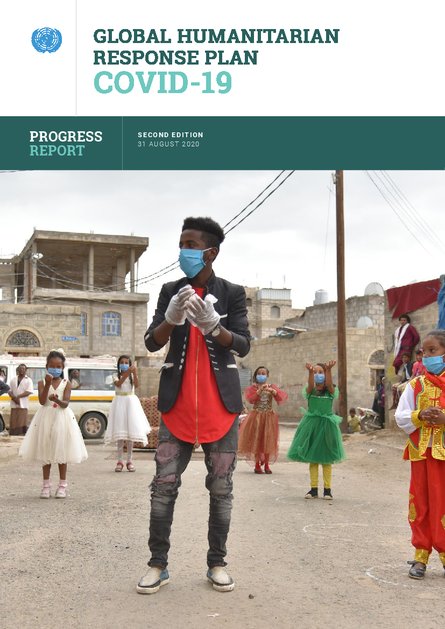
At a glance
The impacts of the COVID-19 pandemic on the lives and livelihoods of the most vulnerable people are enormous, both in terms of the number of people infected and the profound economic crisis that has been unleashed.
Individuals and population groups who were already suffering from violence, stigma, discrimination and unequal access to basic services and living conditions are bearing the brunt of this new crisis. The COVID-19 Global Humanitarian Response Plan (GHRP) analyses and responds to the direct public health and indirect humanitarian consequences of the pandemic, particularly on people in countries already facing other crises.
The scope and the scale of the third iteration of the GHRP released on 16 July demonstrate the increasing reach and devastating consequences of the pandemic. The GHRP July update aims to provide aid to 250 million people in 63 countries,1 over twice the number of people initially targeted for humanitarian aid at the beginning of the year when the Global Humanitarian Overview covering 55 countries was launched in December 2019. Funding requirements to address immediate humanitarian needs caused by or exacerbated by COVID-19 rose from $6.71 billion in May to $10.31 billion in mid-July. The GHRP is currently only 23 per cent funded, with humanitarian partners reporting $2.36 billion of funding. See below for an overview of the cost components, and pages 13–15 for more detail on the funding progress.
Looking ahead, in the 2021 Humanitarian Needs Overviews and Humanitarian Response Plans, the effects of COVID-19 will be considered together with other shocks or stresses affecting the population. In consequence, the GHRP will be merged with the Global Humanitarian Overview. In most cases, COVID-19 will be one of numerous causes of humanitarian needs, with the health and socio-economic impacts of the pandemic intersecting with other health, nutrition, food security, livelihoods and protection risks faced by different population groups.
Strengthened humanitarian-development collaboration will therefore be crucial to help reinforce the humanitarian response and foster complementarity across other ongoing or planned responses, avoiding duplication and identifying areas or groups for whom development or socio/economic responses may be more appropriate. This will provide opportunities to share data and analysis, with mutual benefits on the depth of the needs analysis.
This Progress Report summarizes the collective response to the humanitarian impacts of COVID-19 in the 63 countries covered by the GHRP. It presents an update on the operational context; examples of how humanitarian partners continue to adapt their field responses; infocus sections on Protection and Food Security; a funding overview and analysis; information on how pooled funds are supporting the response; and an update on the strategic response priorities and progress against key indicators. Subsequent versions of this report will be issued in late September and October.